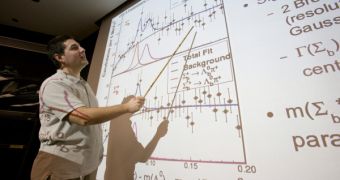The Division for Planetary Sciences, an integrated organism of the American Astronomical Society, held its yearly meeting in New York this week, highlighting the main achievements that its researchers came to over the past year. Some breakthroughs were expected for some time, while other finds were a complete surprise to everyone. All in all, a good year for science, participants said.
An expected discovery proved that battery efficiency could be increased several times by using metal components to augment existing electrodes. This is very important, as the automotive industry is starting to search for viable alternatives to fossil fuels and their attention got inevitably drawn to electrical power. Existing batteries are still a long way from practical application, as hybrid vehicles' ranges are still very reduced.
Another find puzzled the scientific community, when biologists announced that they'd uncovered, deep within a South African goldmine, a bacterium that is fueled by uranium it extracts from surrounding rocks. It's buried at about 2 .5 kilometers (1.7 miles) beneath the surface and it processes neither oxygen, nor sunlight. It feeds on carbon and nitrogen, which it also collects from the stones. NASA has already expressed a keen interest in the bacterium and wants to send it to Mars.
A rather awkward research showed that ripe bananas glow blue in dark light. Biologists believe that a chlorophyll derivative is responsible for generating this incredible feature. Further applications for this discovery include its usage in security systems or microbiology, for tracking purposes.
In space-related news, astronomers finally managed to create a 3D model of what a young planet inside its dust clouds may look like. Furthermore, they were able to conclude that all forming stars are surrounded by dust rings. The reason for that is still unknown and all theories at this point are on equal footing, as far as their scientific viability goes.
All in all, those present at the conference said that this year's researches could help further scientific investigations on several fronts, from space and biology to medicine. Some complained about the lack of funds some critical researches get from investors. A steady flow of money into scientific research is the only way humankind can progress into the future and develop new technologies, the participants concluded.

 14 DAY TRIAL //
14 DAY TRIAL //